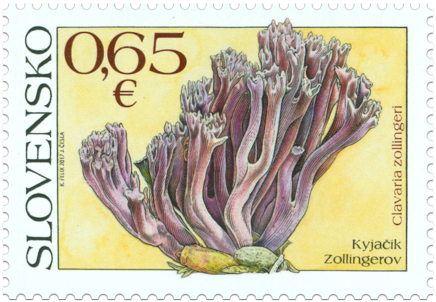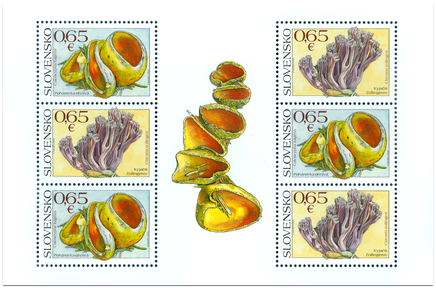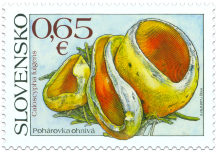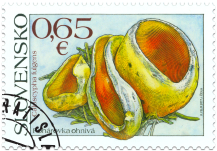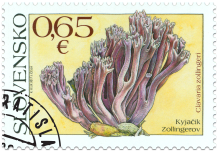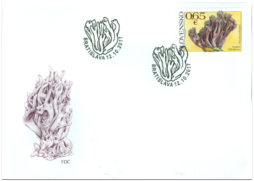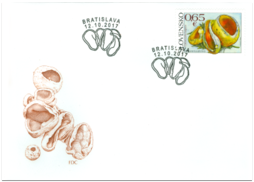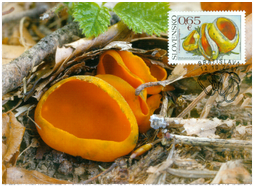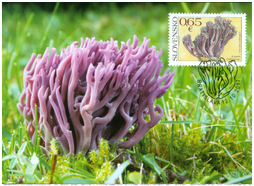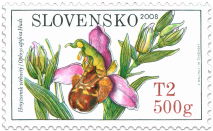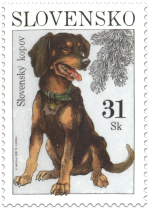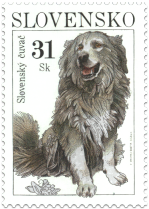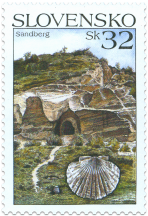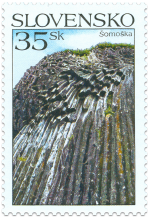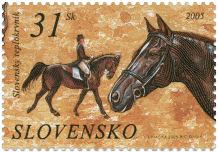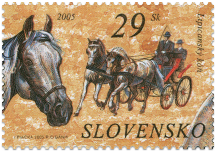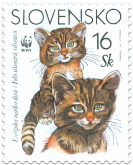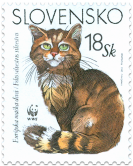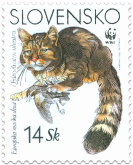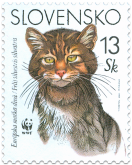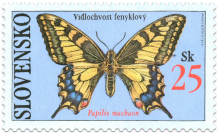643 Date of issue
12.10.2017 Face value
0.65 € Sell price
0.65 €
Clavaria zollingeri is a widely distributed species of mushroom. It belongs to Agaricales order of fungi. It was named after the Swiss botanist and mycologist Heinrich Zollinger who researched the genus Clavaria in his scientific work. The shape of the sporocarp resembles a small branching bush or coral. It consists of several fragile branches with rounded tips and a smooth and dry surface which grows out of a common base. The branches are notable for their unusual colouring with various shades of violet ranging from pink-, red- and brown-violet to amethyst-violet. The sporocarp may lose its vibrant colouring due to age or drying out. The height of the individual branches is 5 − 10 cm and their width is 2 − 6mm. The sporocarp is tasteless and without a strong odour. The spores are white and spherical or slightly elliptical. Even though the sporocarp of Clavaria zollingeri is edible, it has no gastronomic significance due to its rarity and small size.
This mushroom grows solitarily or in groups. In the conditions of central Europe, it grows mostly in meadows and extensive pastures poor in nutrients, but also in bushes and along their edges, in mosses or leaves. It is saprobic, that means that it breaks down dead organic matter. In Europe, it belongs to a very rare species and it is listed in the National Red List of Macromycetes in many countries. It is one of the indicators of long-term traditionally mowed or extensively grazed unmanured meadows and pastures which are among the rare biotopes in Europe. In Slovakia, this species was only recently discovered for the first time. Currently, only about 8 locations are known. These localities are endangered mostly by succession − meadows and pastures are gradually over grown by woody species, by the transformation of permanent grassland into arable land and also by the change of chemical properties of the soil due to excessive use of fertiliser or extensive grazing.
Milan Zajac
Similar products
432 Date of issue
23.10.2008
395 Date of issue
18.04.2007
394 Date of issue
18.04.2007
373 Date of issue
21.04.2006
374 Date of issue
21.04.2006
361 Date of issue
30.06.2005
360 Date of issue
30.06.2005
301 Date of issue
25.06.2003
302 Date of issue
25.06.2003
300 Date of issue
25.06.2003
299 Date of issue
25.06.2003
269 Date of issue
26.06.2002
© 2024 POFIS - Postal philatelic service. All rights reserved

